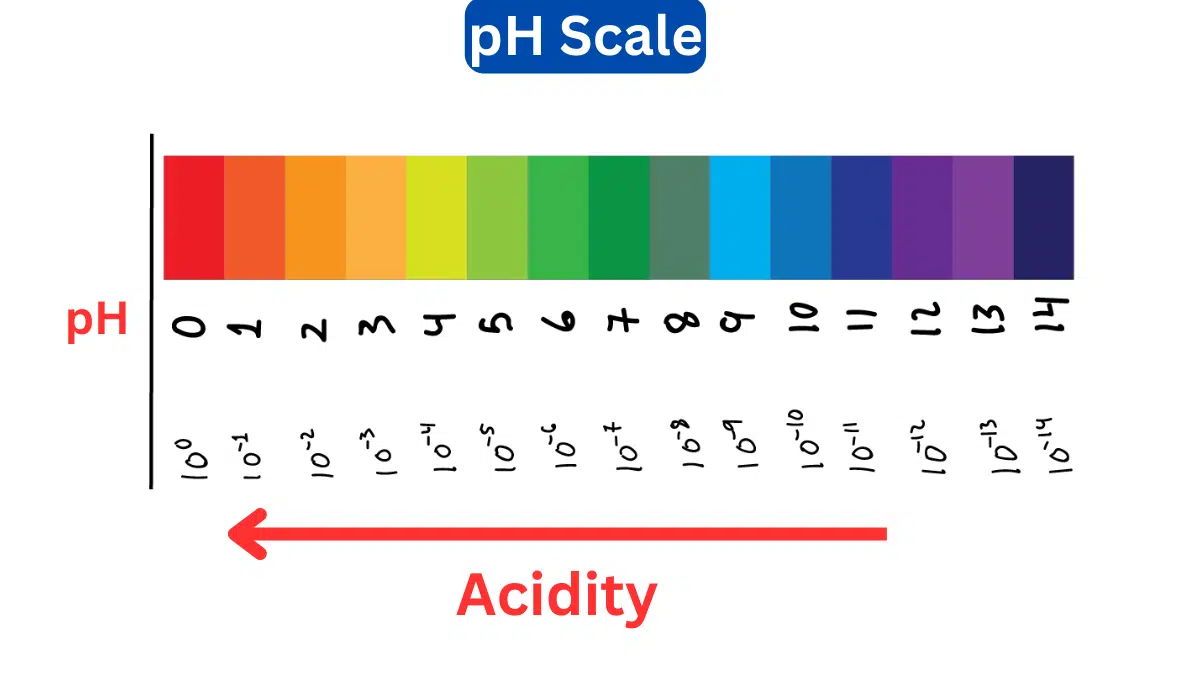Bronsted-Lowry Theory-Definition, Examples, and Limitations
The Bronsted-Lowry theory proposes that acids donate a proton (H+) to a base, while bases donate a proton to an acid. Understanding the Bronsted-Lowry theory helps explain the nature of acid-base reactions and the properties of acids and bases.
What is Bronsted-Lowry Theory?
Bronsted-Lowry theory is a concept that explains the behavior of acids and bases in chemical reactions. It was proposed independently by Johannes Nicolaus Brønsted and Thomas Martin Lowry in 1923. This theory is a generalization of the Arrhenius theory of acids and bases.
Bronsted-Lowry Acid
A Bronsted-Lowry acid is a chemical species that can donate a proton (H+ ion). When an acid donates a proton, it forms the conjugate base.
Examples of Bronsted-Lowry Acid
Some examples of Bronsted-Lowry acids are:
Hydrochloric acid (HCl) – When HCl dissociates in water, it donates an H+ ion and forms the chloride ion (Cl–).
HCl ⇌ H+ + Cl–
Acetic acid (CH3COOH) – Acetic acid donates an H+ ion to form an acetate ion (CH3COO-). CH3COOH ⇌ H+ + CH3COO–
Ammonium ion (NH4+) – Ammonium ion donates a proton to form ammonia (NH3).
NH4+ ⇌ H+ + NH3
Bronsted-Lowry Base
A Bronsted-Lowry base is a chemical species that can accept a proton (H+ ion). When a base accepts a proton, it forms the conjugate acid.
Examples of Bronsted-Lowry Base
Some examples of Bronsted-Lowry bases are:
Water (H2O) – Water accepts a H+ ion to form a hydronium ion (H3O+).
H2O + H+ ⇌ H3O+
Hydroxide ion (OH–) – Hydroxide ion accepts a proton to form water.
OH– + H+ ⇌ H2O
Carbonate ion (CO32-) – Carbonate ion accepts a proton to form bicarbonate (HCO3–).
CO32- + H+ ⇌ HCO3–
Strength of Bronsted-Lowry Acid and Base
The strength of an acid or base depends on how easily it gives up or accepts a proton. Strong acids and bases completely dissociate in water, while weak acids and bases only partially dissociate.
Strong Acids
- Hydrochloric acid (HCl) – dissociates nearly 100% in water
- Nitric acid (HNO3)
- Sulfuric acid (H2SO4)
These strong acids readily donate their protons to water molecules to form hydronium ions (H3O+).
Weak Acids
- Acetic acid (CH3COOH) – only partially dissociates in water
- Carbonic acid (H2CO3)
- Ammonium ion (NH4+)
These weak acids only slightly donate protons to water, resulting in a small amount of hydronium ion formation.
Strong Bases
These ionic compounds completely dissociate in water to produce hydroxide ions (OH–) that readily accept protons.
Weak Bases
- Ammonia (NH3)
- Phosphate ion (PO43-)
- Carbonate ion (CO32-)
These bases only partially accept protons from water, resulting in a relatively small amount of conjugate acid formation.
Bronsted-Lowry Acids and their Conjugated Bases
Here are some Bronsted-Lowry Acids and their Conjugated Bases.
| Bronsted-Lowry Acid | Conjugated Base |
|---|---|
| Hydrochloric acid (HCl) | Chloride ion (Cl–) |
| Sulfuric acid (H2SO4) | Hydrogen sulfate ion (HSO4–) |
| Nitric acid (HNO3) | Nitrate ion (NO3–) |
| Acetic acid (CH3COOH) | Acetate ion (CH3COO–) |
| Hydrofluoric acid (HF) | Fluoride ion (F–) |
| Hydrobromic acid (HBr) | Bromide ion (Br–) |
| Perchloric acid (HClO4) | Perchlorate ion (ClO4–) |
| Hydroiodic acid (HI) | Iodide ion (I–) |
| Hydrocyanic acid (HCN) | Cyanide ion (CN–) |
| Hypochlorous acid (HClO) | Hypochlorite ion (ClO–) |
| Nitrous acid (HNO2) | Nitrite ion (NO2–) |
| Sulfurous acid (H2SO3) | Hydrogen sulfite ion (HSO3–) |
| Phosphoric acid (H3PO4) | Dihydrogen phosphate ion (H2PO4–) |
| Carbonic acid (H2CO3) | Hydrogencarbonate ion (HCO3–) |
| Ascorbic acid (C6H8O6) | Ascorbate ion (C6H7O6–) |
| Citric acid (C6H8O7) | Citrate ion (C6H7O7–) |
| Tartaric acid (C4H6O6) | Tartrate ion (C4H5O6–) |
| Benzoic acid (C7H6O2) | Benzoate ion (C7H5O2–) |
| Oxalic acid (C2H2O4) | Oxalate ion (C2HO4–) |
| Salicylic acid (C7H6O3) | Salicylate ion (C7H5O3–) |
| Phenol (C6H5OH) | Phenoxide ion (C6H5O–) |
| Methanesulfonic acid (CH3SO3H) | Methanesulfonate ion (CH3SO3–) |
| Trifluoromethanesulfonic acid (CF3SO3H) | Trifluoromethanesulfonate ion (CF3SO3–) |
| Tosic acid (C7H7SO3H) | Tosilate ion (C7H7SO3–) |
| Lactic acid (C3H6O3) | Lactate ion (C3H5O3–) |
| Formic acid (HCOOH) | Formate ion (HCOO–) |
Limitation of Bronsted-Lowry Theory
- It focuses only on proton transfer reactions and does not account for other types of acid-base reactions. For example, the reaction of a metal oxide with an acid does not involve proton transfer.
- It treats all protons as identical, even though the reactivity of a proton depends on its chemical environment. For example, a proton bonded to fluorine in HF is more acidic than a proton bonded to oxygen in H2O.
- It uses an arbitrary distinction between acids/bases and their conjugates. For example, H2O can act as both an acid (proton donor) and a base (proton acceptor).
- It does not provide quantitative information about acid or base strength. Other theories like the Lewis theory and solvent system theory aim to account for these limitations.
- It focuses on reactions in aqueous solutions and does not describe acid-base behavior in non-aqueous solvents very well.
- The theory treats lone electron pairs as bases, but some lone pairs have little basicity, like the lone pairs on O2.




Leave a Reply